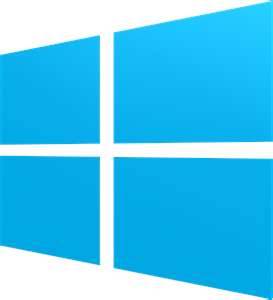Windows 8/8.1.. 
Before I say anything about it, I can tell you that I run Windows 8.1 daily. It is my sole operating system, and I would not revert back to Windows 7 unless forced to do so..
When all is said and done, an operating system just holds the various parts of a computer together such that they can interact.
Most of today's Windows users will not remember 'Program Manager' which was the Start Menu found in the first versions of Windows. It was basically a collection of 'tiles' in which you placed your applications. Windows 95 brought about what we have known as the 'classic' start menu, a button in the bottom left corner of the screen which prompted a popup menu of everything installed and saved.
Having used the above menu for so long, it has become the natural way to interact with what is seen on the screen. Windows 8 introduces a different way, and does it's best to ensure that users stay within it..
Windows 8 'apps' open in full screen, and the others open in what is left of the original Windows desktop.
I think that this is fine for a tablet type computer where, unless you run everything in full screen, you will not be able to make much of the information displayed. For a desktop user like me where I have a screen size considerably larger than a tablet PC, I don't need or want to run applications full screen.
Fortunately, some 3rd party software houses have released start menus for Windows 8 which bring back usability that Microsoft wanted us to leave behind. Use of the 3rd party software essentially gives us back the traditional means to operate the computer, while still giving access to the new way. We get the best of both worlds.
There are links to the alternative Windows 8 start menus in the 'Software' section of this website..
Some good news re Windows 8 is that Microsoft will endeavour to ensure that 'everything Windows 7' will run without a problem.
Unfortunately, not everything does work, especially utilities which defragment, backup or alter partitions. It has NEVER been a good idea to use utilities which are not written specifically to work with YOUR current operating system, and Windows 8 is NO exception.
If you have a good working Windows 7 machine, there are no pressing arguments for either upgrading what you have now, or buying a new computer with Windows 8 pre-installed. Windows 7 will get support until 2020, and may become the next Microsoft XP if Microsoft continue the quest to remove traditional ways to work a computer.
Key combinations
Here are some basic and useful key combinations which will get you started and out of trouble.. :-).
Open the charms = Windows logo key  + C + C
Show commands for an app = Windows logo key  + Z + Z
Switch to your last app = Windows logo key  + Tab + Tab
See a list of recent apps = Windows logo key  + Tab + Tab
Close an app = Alt + F4
Zoom = Ctrl+Plus Sign (+) or Ctrl+Minus Sign (-)
There are lots more here.. http://windows.microsoft.com/en-ca/windows-8/keyboard-shortcuts
Nobody could be expected to learn all of them, so just cherry pick the ones that are most useful to you..
|